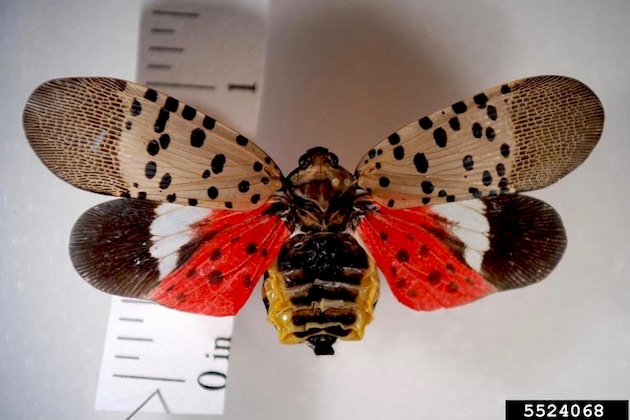Sugarbush Management
No Spotted Lanternfly in New York...yet
State officials urge farmers to be 'vigilant'
By | NOVEMBER 6, 2019
ALBANY, N.Y.—The dreaded spotted lanternfly has still not shown up in New York but farmers are being urged to stay vigilant and report overwintering egg masses.
“Infestations of this pest could wreak havoc on New York’s agricultural industry, especially the forestry industry and the specialty crops that our State is known for," said State Agriculture Commissioner Richard A. Ball said. "We will continue inspections, enforcement of the quarantine regulations, and outreach, and ask farmers, outdoor enthusiasts and all New Yorkers to also remain alert and watch for signs of spotted lanternfly egg masses, which can survive through the winter.”
In the fall, SLF will lay their eggs on any flat surface such as vehicles, firewood, outdoor furniture, stone or other items which can be inadvertently transported to new areas.
To date, there has not been a documented spotted lanternfly infestation in New York.
SLF, an invasive insect from Asia, is a destructive pest that feeds on the sap of more than 70 plant species including maples, tree-of-heaven, apple trees, grapevine, and hops.
In infested areas of Pennsylvania and other Mid-Atlantic states, feeding by sometimes thousands of SLF can stress plants, making them vulnerable to disease and attacks from other insects.
SLF excrete large amounts of sticky "honeydew," which attracts sooty molds that interfere with plant photosynthesis, negatively affecting the growth and fruit yield of plants. The accumulation of honeydew under infestations, along with the swarms of insects it attracts, can also significantly hinder outdoor activities.
While these insects can jump and fly short distances, these pests spread primarily through human activity. SLF lay their eggs starting in the fall on surfaces including vehicles, stone, rusty metal, outdoor furniture, and campers, and can hitch rides to new areas when these objects are moved. Egg masses are one-inch-long and are often smooth and brownish-gray with a shiny, waxy coating when first laid. Over time, egg masses become brown and scaly.
SLF was first discovered in Pennsylvania in 2014, and has since been found in New Jersey, Delaware, Maryland, and Virginia. Given the proximity of the Pennsylvania and New Jersey infestations, there is a high risk of SLF becoming established in New York, officials said.
DEC and DAM have not confirmed any SLF infestations to date, but several individual adult SLF have been found in counties across New York including: Delaware; Albany; Yates, Westchester, Suffolk, New York, Kings, Monroe, Chemung, Erie, Ontario, Ulster, Nassau, Sullivan, and Orange.
State officials are urging the public to inspect outdoor items such as vehicles, outdoor furniture and camping equipment for egg masses or insects, and report any sightings by sending photos and location information to spottedlanternfly@dec.ny.gov.
Anyone that visits locations of SLF quarantines in other states should look for and remove insects and egg masses on items before leaving those areas. For more information, please visit DEC’s spotted lanternfly webpage.
































